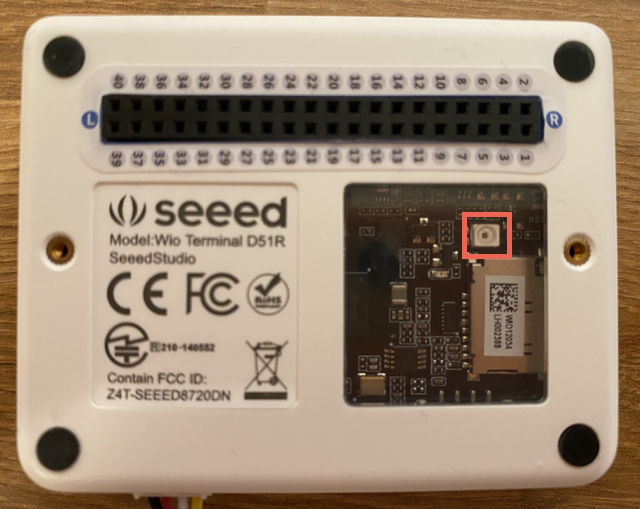3.1 KiB
Add a sensor - Wio Terminal
In this part of the lesson, you will use the light sensor on your Wio Terminal.
Hardware
The sensor for this lesson is a light sensor that uses a photodiode to convert light to an electrical signal. This is an analog sensor that sends an integer value from 0 to 1,023 indicating a relative amount of light that doesn't map to any standard unit of measurement such as lux.
The light sensor is built into the Wio Terminal and is visible through the clear plastic window on the back.
Program the light sensor
The device can now be programmed to use the built in light sensor.
Task
Program the device.
-
Open the nightlight project in VS Code that you created in the previous part of this assignment
-
Add the following line to the bottom of the
setupfunction:pinMode(WIO_LIGHT, INPUT);This line configures the pins used to communicate with the sensor hardware.
The
WIO_LIGHTpin is the number of the GPIO pin connected to the on-board light sensor. This pin is set toINPUT, meaning it connects to a sensor and data will be read from the pin. -
Delete the contents of the
loopfunction. -
Add the following code to the now empty
loopfunction.int light = analogRead(WIO_LIGHT); Serial.print("Light value: "); Serial.println(light);This code reads an analog value from the
WIO_LIGHTpin. This reads a value from 0-1,023 from the on-board light sensor. This value is then sent to the serial port so you can see it in the Serial Monitor when this code is running.Serial.printwrites the text without a new line on the end, so each line will start withLight value:and end with the actual light value. -
Add a small delay of one second (1,000ms) at the end of the
loopas the light levels don't need to be checked continuously. A delay reduces the power consumption of the device.delay(1000); -
Reconnect the Wio Terminal to your computer, and upload the new code as you did before.
-
Connect the Serial Monitor. You should see light values being output to the terminal. Cover and uncover the light sensor on the back of the Wio Terminal to see the values change.
> Executing task: platformio device monitor < --- Available filters and text transformations: colorize, debug, default, direct, hexlify, log2file, nocontrol, printable, send_on_enter, time --- More details at http://bit.ly/pio-monitor-filters --- Miniterm on /dev/cu.usbmodem101 9600,8,N,1 --- --- Quit: Ctrl+C | Menu: Ctrl+T | Help: Ctrl+T followed by Ctrl+H --- Light value: 4 Light value: 5 Light value: 4 Light value: 158 Light value: 343 Light value: 348 Light value: 344
💁 You can find this code in the code-sensor/wio-terminal folder.
😀 Adding a sensor to your nightlight program was a success!
